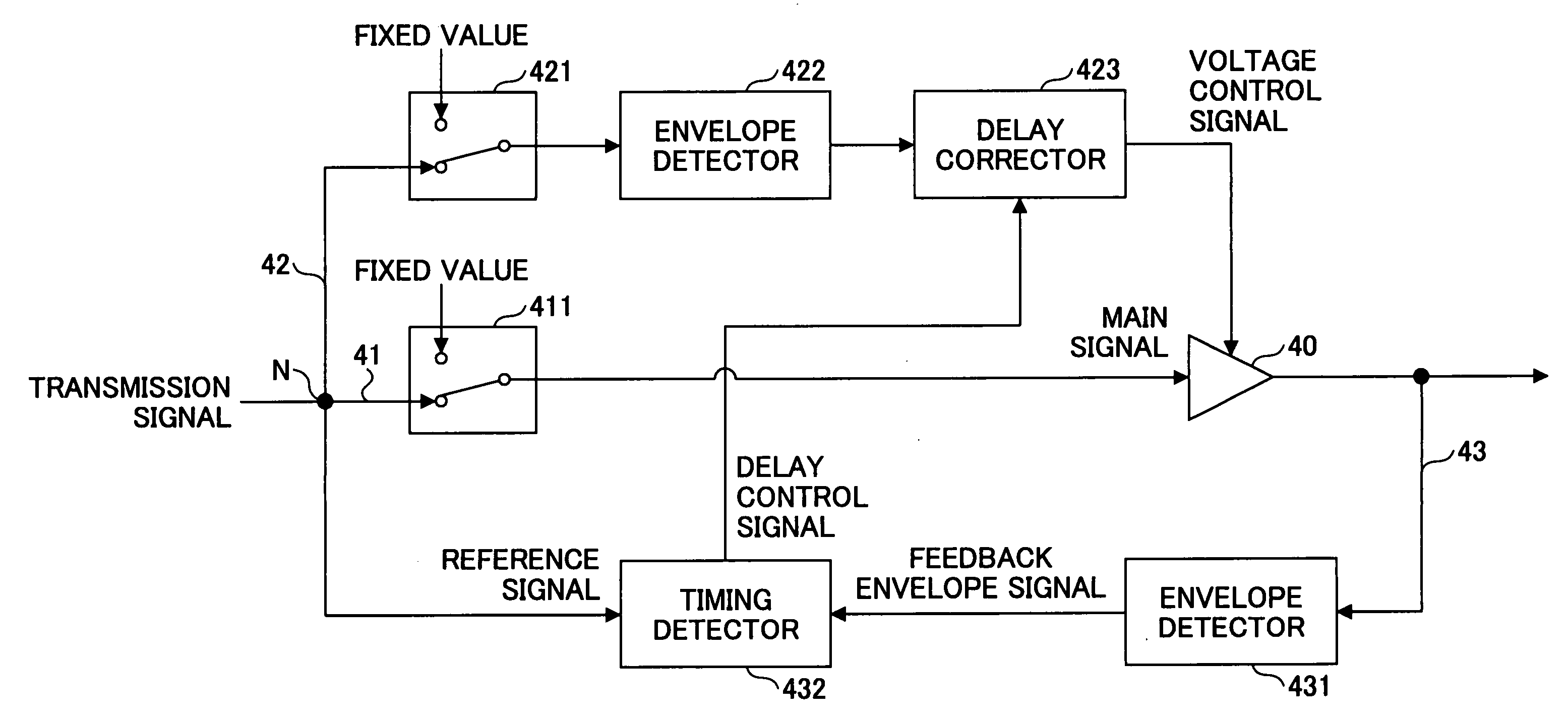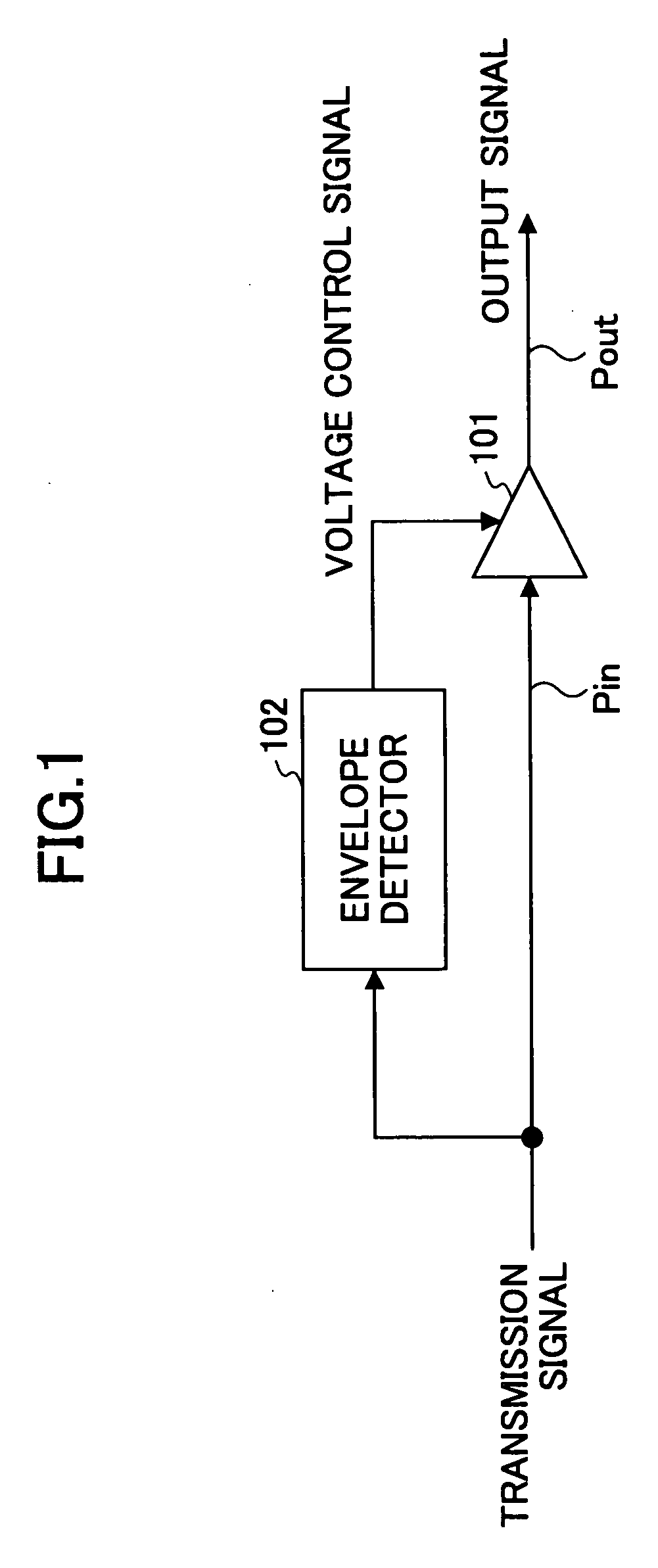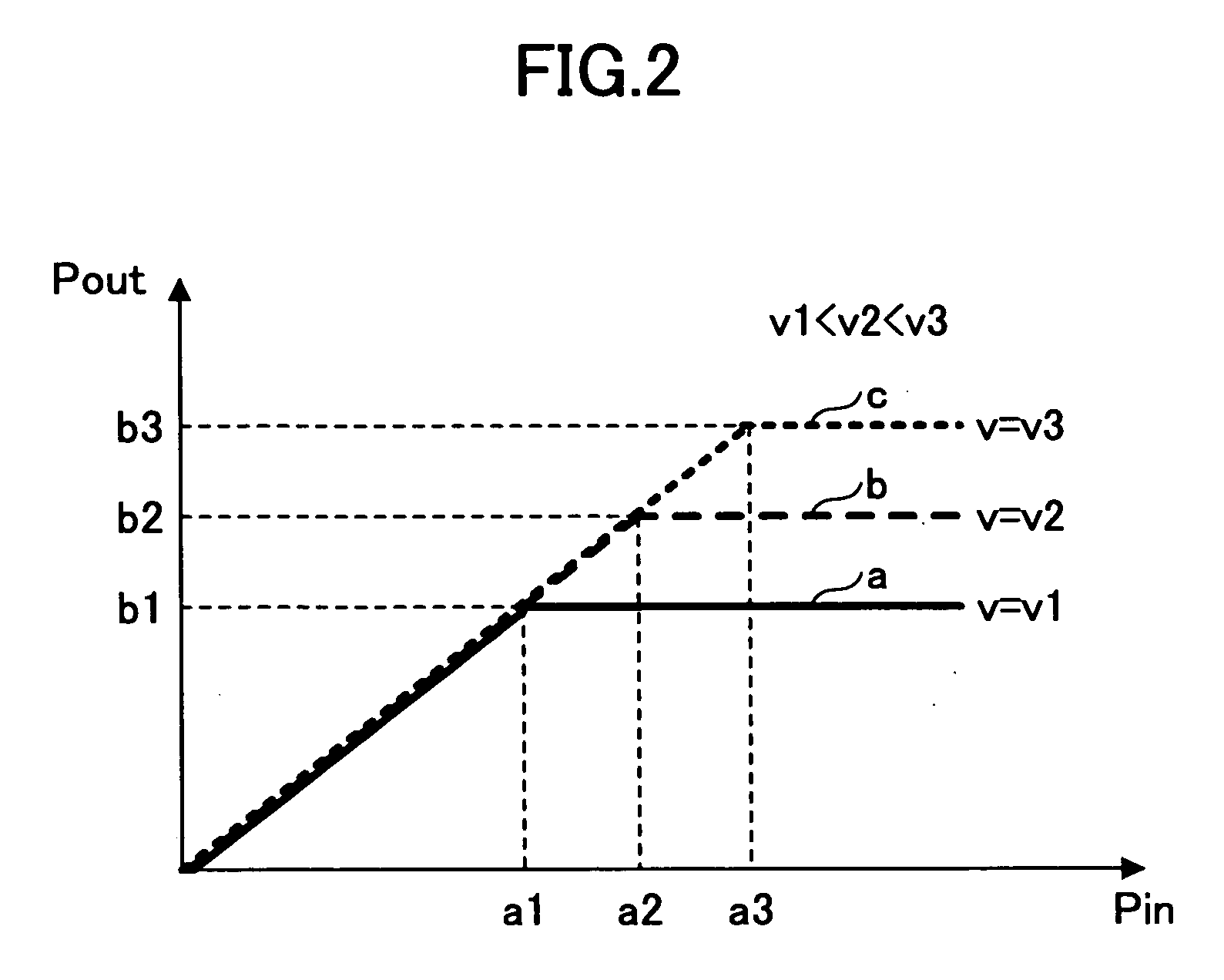Timing controller and timing control method
a timing controller and timing control technology, applied in the field of timing controller and timing control method, can solve the problems of significant reduction in amplification efficiency, disadvantage in particular to simple mobile communication devices and devices using a small-size battery, transmission signal (input signal) and voltage control signal v are slightly out of phase with each other, and achieve low distortion and high amplification efficiency
- Summary
- Abstract
- Description
- Claims
- Application Information
AI Technical Summary
Benefits of technology
Problems solved by technology
Method used
Image
Examples
first embodiment
[0032]FIG. 4 is a block diagram showing part of a linear transmitter according to a first embodiment of the present invention.
[0033] Referring to FIG. 4, the linear transmitter includes an amplifier 40, a main signal channel 41 provided on the input side of the amplifier 40, a control signal channel 42 provided on the control signal side of the amplifier 40, and a feedback channel 43 provided on the output side of the amplifier 40. In the main signal channel 41, a switch 411 is provided between a node N to which a signal to be transmitted (a transmission signal) is fed and the input port of the amplifier 40. In the control signal channel 42, a switch 421 connected to the node N and an envelope detector part 422 connected to the output of the switch 421 are provided, and a delay corrector part 423 is provided between the output of the envelope detector part 422 and the control port of the amplifier 40. In the feedback channel 43, an envelope detector part 431 connected to the output...
second embodiment
[0050] A description is given below of a second embodiment according to the present invention.
[0051] Any signal may be employed as a transmission signal used in measuring the channel delay. However, in terms of improving measurement accuracy, it is preferable to use a test signal having a special waveform. FIG. 11 shows the case where an impulse signal is used as a test signal. As graphically represented, the delay is determined by measuring the interval between pulses. Accordingly, the period in the case of sequentially transmitting pulses should be sufficiently longer than the delay. FIG. 12 shows the case where a two-tone signal is used as a test signal. In this case, the delay is determined by comparing the amplitudes of the two-tone signal. In terms of improving measurement accuracy, preferably, the two-tone signal has a low frequency. If the frequency is high, the waveform period becomes short so that it may be impossible to determine a large delay difference. Employment of t...
third embodiment
[0052]FIG. 13 is a block diagram showing a transmission part of a linear transmitter using a timing controller according to a third embodiment of the present invention. According to this embodiment, a delay measurement part 44 including the envelope detector part 431 and the timing detector part 432 is removably attached to the main body of the linear transmitter through connectors 441, 442, and 443. This embodiment is preferable in terms of simplifying the configuration of the linear transmitter.
[0053] According to one embodiment of the present invention, the delay difference between a main signal channel and a control channel is measured by suitably switching each of a main signal switch to select one of an input signal and a signal representing a fixed value and a control signal switch to select one of the input signal and the signal representing the fixed value. A channel delay is controlled so as to cancel this delay difference. More specifically, the delay difference is deter...
PUM
 Login to View More
Login to View More Abstract
Description
Claims
Application Information
 Login to View More
Login to View More - R&D
- Intellectual Property
- Life Sciences
- Materials
- Tech Scout
- Unparalleled Data Quality
- Higher Quality Content
- 60% Fewer Hallucinations
Browse by: Latest US Patents, China's latest patents, Technical Efficacy Thesaurus, Application Domain, Technology Topic, Popular Technical Reports.
© 2025 PatSnap. All rights reserved.Legal|Privacy policy|Modern Slavery Act Transparency Statement|Sitemap|About US| Contact US: help@patsnap.com



